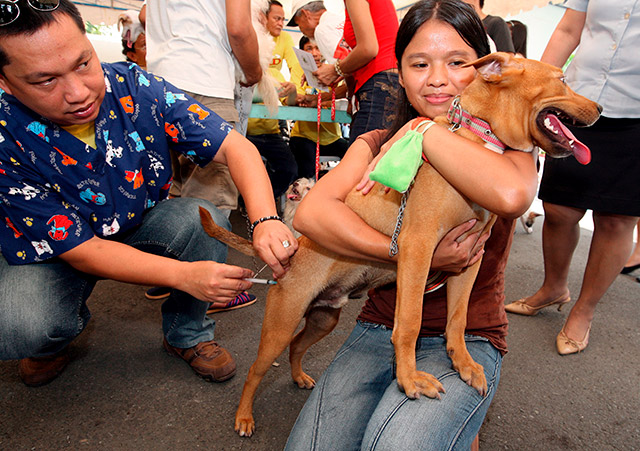SUMMARY
This is AI generated summarization, which may have errors. For context, always refer to the full article.

MANILA, Philippines – In 2008, the World Health Organization (WHO) aimed through the Rabies-free Visayas Project to declare the Visayas islands rabies-free after 5 years.
By 2013, only the province of Biliran and the municipality of Limasawa in Southern Leyte were declared rabies-free, but rabies control in Visayas improved, WHO said in a report on neglected tropical diseases (NTDs) released Thursday, February 19.
Dog rabies – an NTD endemic in the Visayas – is an infectious viral disease that is “nearly always fatal,” according to WHO.
NTDs, meanwhile, are infections caused by a variety of pathogens that affect more than 1 billion people worldwide. These diseases are endemic in 149 countries, according to WHO.
Based on data from WHO and the Philippines’ health department, the virus is responsible for the deaths of 200 to 300 Filipinos every year. Because of this, the Philippines is among the top 10 countries in the world in terms of rabies prevalence.
Globally, the virus causes tens of thousands of deaths every year. More than 90% of deaths happen in Africa and Asia.
Vaccinate dogs
The Rabies-free Visayas Project was funded by the Bill and Melinda Gates Foundation, along with two other similar projects in Africa’s United Republic of Tanzania and Kwa-Zulu Natal, for $10 million.
The Philippine project tapped into community volunteers to implement on a large scale dog vaccination campaigns. At the end of the 5-year project, the number of human deaths in the Visayas decreased from 51 in 2008, to 4 in 2013:
| Region | 2008 | 2009 | 2010 | 2011 | 2012 | 2013 |
| Western Visayas | 14 | 14 | 15 | 8 | 3 | 1 |
| Central Visayas | 14 | 12 | 13 | 10 | 7 | 2 |
| Eastern Visayas | 23 | 17 | 12 | 11 | 6 | 1 |
| Total | 51 | 43 | 40 | 29 | 16 | 4 |
While the regions of South-East Asia and Western Pacific aim to eliminate rabies by 2020, the Philippines has an earlier target of 2016. (READ: PH seeks to end rabies deaths in two years)
The plan is to vaccinate at least 70% of the estimated dog population in the country – a more cost-effective approach than treating patients after exposure to the virus, according to WHO. (READ: A healthy pet is a happy pet)
“While human deaths are entirely preventable through post-exposure prophylaxis and pre-exposure vaccination, these interventions will not eliminate the disease and costs will therefore continue to escalate over time if rabies is not controlled at its canine source,” the UN health agency said in the report.
WHO urged governments worldwide to invest in dog vaccination, especially in endemic countries in Africa and most of Asia where investment “has been minimal to date.”
Health and veterinary sectors will also have to closely collaborate in order to control the disease and eventually attain the 2020 elimination target. – Rappler.com
Add a comment
How does this make you feel?
There are no comments yet. Add your comment to start the conversation.